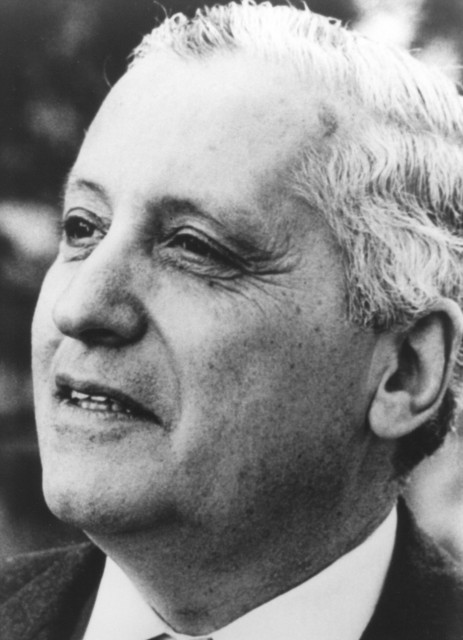Ilya Prigogine
1917-2003

Prigogine was awarded the 1977 Nobel Prize in Chemistry for "his contributions to nonequilibrium thermodynamics, particularly the theory of dissipative structures". What does this mean? The second law of thermodynamics states that an isolated system eventually runs down to a time-independent equilibrium state; as this happens, the system's entropy increases. Nonequilibrium thermodynamics allows the entropy increase to be calculated in terms of the rates of various irreversible processes, such as the input of energy from an external source. Prigogine's most remarkable contributions came from studies of irreversible processes far from equilibrium. For example, when a fluid is heated from below it becomes unstable; the warm liquid becomes less dense and rises. But at a certain critical value of the temperature difference between the bottom and top liquids a remarkable thing happens; the system spontaneously forms a regular hexagonal array of convection cells, with liquid in each circulating from bottom to top and back. Prigogine named these ordered nonequilibrium stationary states "dissipative structures". This research has profound consequences for biological systems where the formation of individual organisms and species can be considered examples of dissipative structures.
Though born in Moscow, Prigogine has lived most of his life in Brussels, Belgium where, since 1947 he has been Professor in the Université Libre de Bruxelles. In 1967 he founded the Center for Studies in Statistical Mechanics at the University of Texas, Austin, and has since divided his time equally between Brussels and Austin. His list of honors and awards covers more than three single-spaced pages. Concerned with the broader philosophical issues raised by his work, Prigogine wrote "Order Out of Chaos"; in this book he explains his scientific discoveries in nontechnical language and places them in a historical context.
Location in chemistry building: Basement Floor; East Wing North Wall; Sequence 1
Source: Professor Prigogine